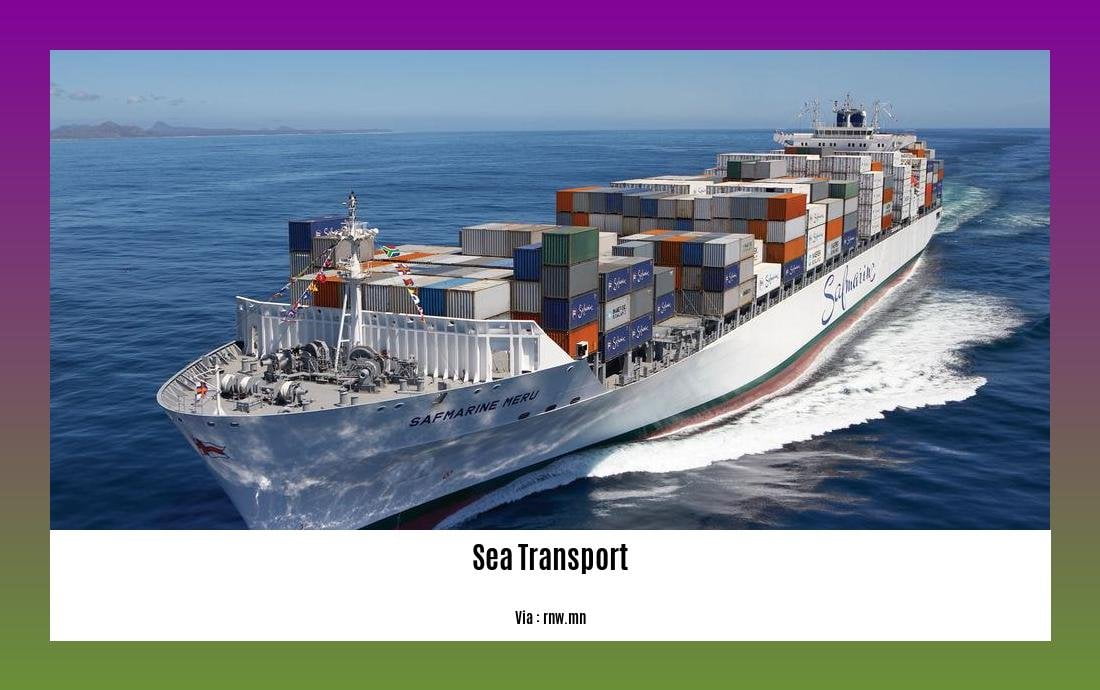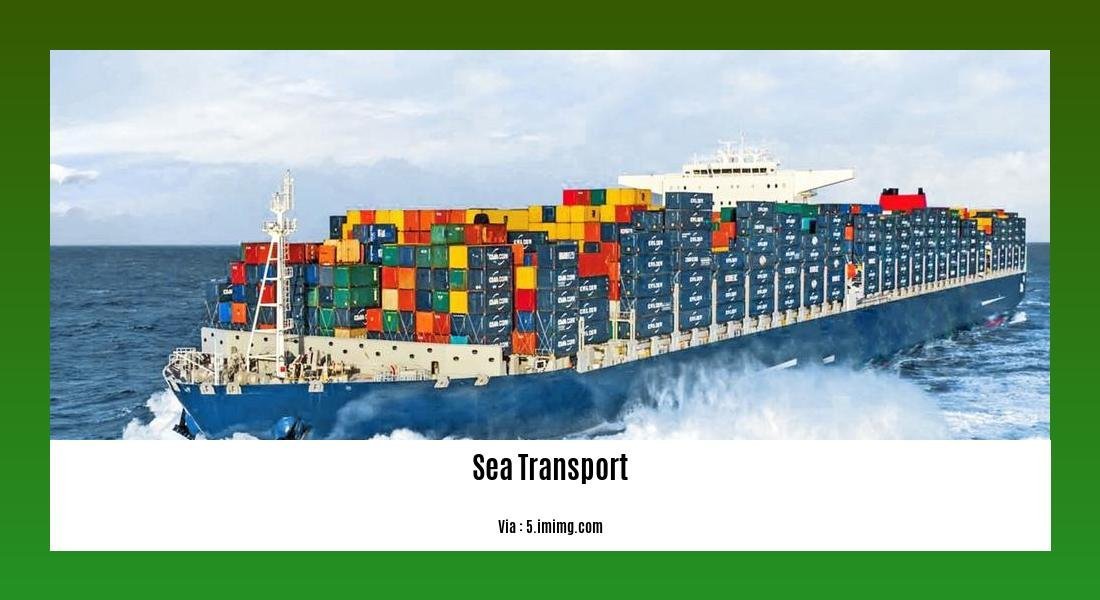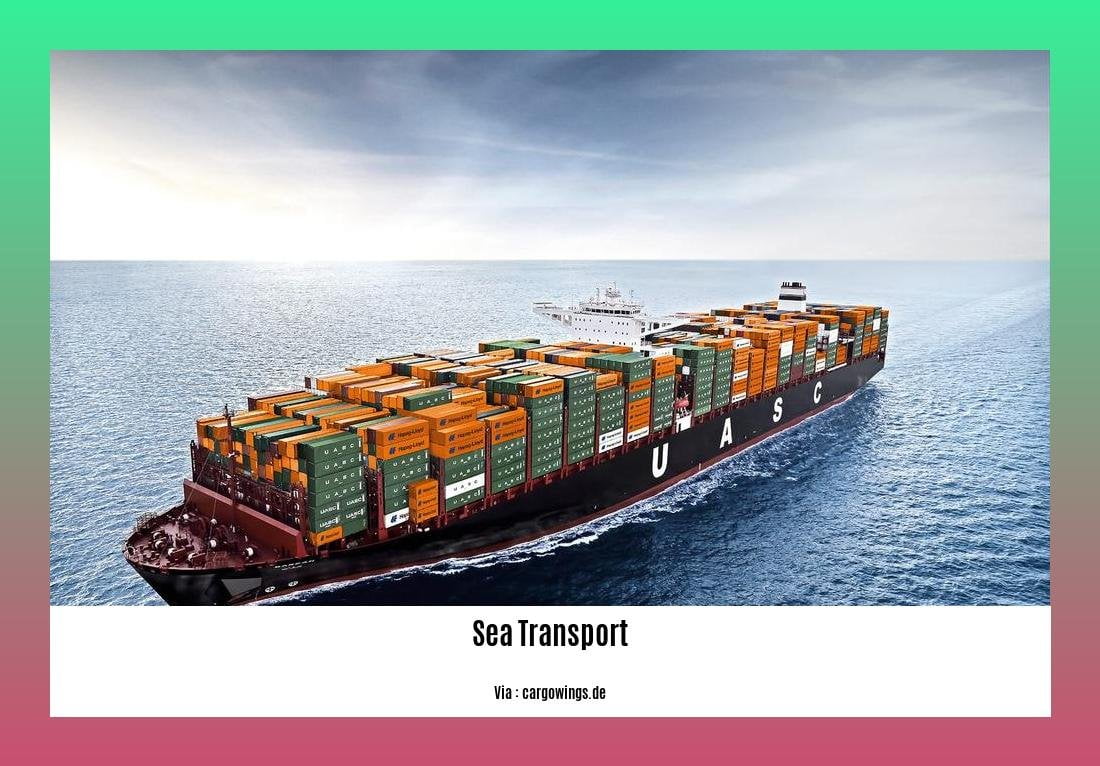Unlocking Global Trade: Exploring the Benefits of the Panama Canal
The Panama Canal stands as a vital link in the global trade network, carving a path of immense significance for international commerce. This remarkable feat of engineering not only connects the Atlantic and Pacific Oceans but also unlocks a myriad of benefits for the maritime industry. As we delve into the advantages that the Panama Canal offers, such as time-saving efficiencies, enhanced connectivity, and cost reductions, we uncover its pivotal role in facilitating the smooth flow of goods and services across the world economy. Join us as we unravel the remarkable benefits of this marvel of modern engineering and its profound impact on global trade.
Key Takeaways:
- The Panama Canal is a vital component of the global shipping network and plays a crucial role in international trade.
- The canal allows for time-saving advantages by providing a shortcut for ships to travel between the Atlantic and Pacific Oceans, avoiding the lengthy journey around South America.
- Improved connectivity is another significant benefit of the Panama Canal, enabling more efficient and reliable transportation of goods between regions.
- Cost reductions are a notable advantage of utilizing the canal, as it eliminates the need for longer and more expensive shipping routes.
- The Panama Canal’s ability to optimize supply chain processes and enhance cost-efficiency strategies makes it a valuable asset for the maritime industry.
- With years of experience in logistics management, professionals in the industry can provide valuable insights into the benefits and advantages of the Panama Canal for global trade.
Benefits of the Panama Canal

The Panama Canal stands as an iconic marvel, a testament to human ingenuity and the remarkable engineering feats achieved by mankind. But beyond its awe-inspiring spectacle, it serves as a vital conduit, unlocking a world of opportunities for global trade. Let’s delve into the benefits that the Panama Canal brings to the maritime industry and the world economy.
Reduced Shipping Costs
One of the most significant advantages of the Panama Canal is its ability to slash shipping costs and create a more cost-effective trade route. By bypassing the lengthy and arduous journey around the southern tip of South America, ships can save substantial amounts of time and money. The canal reduces the distance traveled, fuel consumption, and overall logistics expenses. This cost-efficiency translates into lower freight charges and ultimately benefits businesses and consumers worldwide.
Time-Saving Advantages
Time is a precious commodity, especially in the fast-paced world of international trade. The Panama Canal serves as a time-saving shortcut for ships, eliminating the need for lengthy detours and circumnavigating continents. By traversing this transoceanic waterway, ships can significantly reduce their transit time, enabling goods to reach their destinations faster. This time advantage enhances supply chain efficiency, minimizing delays, and ensuring time-sensitive goods arrive promptly, bolstering trade flows across the globe.
Improved Connectivity
Picture the Panama Canal as a strategic bridge connecting the world’s major trade routes. It allows vessels to seamlessly connect the Atlantic and Pacific Oceans, forging crucial links in the global supply chain. This improved connectivity opens up new possibilities for trade, facilitating the exchange of goods between regions that may have been geographically isolated in the past. The canal eliminates the need for lengthy transshipment processes, improving overall logistics efficiency and strengthening the interconnectedness of global trade.
Expanded Trade Opportunities
The Panama Canal isn’t just a narrow strip of water; it’s a gateway to limitless trade opportunities. By providing a shorter and more efficient trade route, the canal has the power to influence trade patterns and unleash new market potentials. It allows for the transportation of larger cargo volumes, accommodating the ever-increasing size of modern vessels. This enhancement in capacity expands trade possibilities, stimulates economic growth, and encourages investments in international trade.
Mitigating Environmental Impact
Beyond its economic benefits, the Panama Canal also takes center stage in championing environmental conservation efforts. It plays a vital role in reducing greenhouse gas emissions by shortening shipping routes and cutting down fuel consumption. By enabling ships to take the more direct path through the canal, it contributes to a greener maritime industry. Furthermore, the canal’s operations adhere to strict environmental standards, ensuring sustainability and minimizing the ecological footprint of global trade.
In conclusion, the benefits of the Panama Canal extend far beyond its functional purpose. From reducing shipping costs and saving time to improving connectivity and expanding trade opportunities, it acts as a crucial linchpin in the global supply chain. Its impact on international trade and the world economy is undeniable. As the Panama Canal continues to shape the dynamics of global commerce, it remains an emblem of human innovation, fostering progress and propelling the world towards a more interconnected future.
Check out the amazing benefits of air transportation! benefit of air transportation
Discover the incredible advantages of intelligent transport systems! Explore how they can revolutionize the way we travel. benefits of intelligent transport system
Uncover the numerous benefits of sea transport and its impact on global trade! benefits of sea transport
Dive into the advantages of water transport and its efficiency in transporting goods and people! benefits of water transport
Improved Connectivity and Accessibility for Shipping

The Panama Canal, a crucial waterway connecting the Atlantic and Pacific Oceans, plays a vital role in the global shipping industry. Efforts have been made in recent years to improve the connectivity and accessibility of the canal, resulting in a range of benefits for shipping and international trade. With these enhancements, the Panama Canal has become a key facilitator of improved connectivity and accessibility for shipping.
Shorter Transit Times and Increased Capacity
By enhancing connectivity and accessibility, the Panama Canal enables ships to take advantage of shorter transit times and increased capacity. With the ability to bypass the need to travel around the southern tip of South America, ships save significant time and money. This shortcut not only enhances supply chain efficiency but also allows goods to reach their destinations faster. The reduced transit times benefit both importers and exporters, enabling them to meet demand more efficiently.
Reduced Costs and Improved Efficiency
Improved connectivity and accessibility through the Panama Canal offer cost-saving benefits for the shipping industry. By cutting down on travel distance and time, the canal reduces shipping costs by eliminating the need for lengthy detours. This reduction in costs extends to fuel consumption as well, contributing to a greener maritime industry. With larger cargo volumes accommodated by the expansion of the canal, economies of scale come into play, leading to increased efficiency and reduced costs.
Enhanced Trade Opportunities and Economic Growth
The Panama Canal’s improved connectivity and accessibility have opened up new doors for trade opportunities. Previously geographically isolated regions are now connected, allowing for the exchange of goods and fostering economic growth. The ability to transport larger cargo volumes not only expands trade possibilities but also stimulates economic development. By facilitating the movement of goods between regions, the canal strengthens international trade and plays a significant role in the world economy.
The Role of the Expanded Panama Canal
The expansion of the Panama Canal in 2016 has further enhanced connectivity and accessibility for shipping. The passage of larger vessels, known as New Panamax ships, showcases the canal’s increased capacity to accommodate larger cargo volumes. This expansion has revolutionized the maritime industry, offering improved efficiency, reduced transit times, and cost reductions on a larger scale.
Key Takeaways:
- Efforts to improve the connectivity and accessibility of the Panama Canal have resulted in numerous benefits for the shipping industry and international trade.
- The canal’s shorter transit times and increased capacity help save time and reduce costs for ships.
- The improved connectivity and accessibility of the Panama Canal contribute to enhanced efficiency and supply chain optimization.
- By connecting previously geographically isolated regions, the canal opens up new trade opportunities.
- The expansion of the Panama Canal has allowed for the passage of larger vessels, further enhancing its connectivity and accessibility.
Sources:
1. The Expanded Panama Canal
2. Benefits of the Panama Canal Expansion
Cost Reductions and Economic Benefits Facilitated by the Canal
The Panama Canal is an undeniable force that shapes the modern maritime industry, providing immense cost reductions and economic benefits for global trade. By connecting the Atlantic and Pacific Oceans, this remarkable engineering feat revolutionized supply chain efficiency and fostered unparalleled trade opportunities. In this article, we will delve into the invaluable advantages offered by the Panama Canal and how it revolutionizes international commerce.
Improved Connectivity: A Shortcut to Success
The Panama Canal serves as a vital trade route, cutting through the heart of Central America and providing a valuable shortcut for ships. By bypassing the need to travel around the southern tip of South America, ships can save considerable time and money. This reduction in transit time translates into faster deliveries, enabling businesses to meet their supply chain demands more efficiently.
Connecting the two great oceans, the canal has dramatically enhanced connectivity on a global scale. Previously geographically isolated regions now have the opportunity to participate in international trade, fostering economic growth and development. The ability to exchange goods between regions seamlessly has paved the way for increased trade opportunities, connecting nations and promoting cultural exchange.
Time and Cost Reductions: Streamlining the Global Supply Chain
One of the primary advantages of the Panama Canal is its ability to significantly reduce shipping costs. By providing a shorter transit route, ships can avoid lengthy detours and save on fuel expenses. The cost reductions facilitated by the canal have a direct impact on businesses, improving their bottom line and competitiveness in the global marketplace.
Additionally, the time-saving advantages granted by the Panama Canal cannot be overstated. With quicker transit times, businesses can deliver goods faster, meet customer demands promptly, and optimize their supply chain processes. The canal’s role as a time-saving conduit is a crucial factor in ensuring supply chain efficiency, reducing inventory holding costs, and minimizing the risk of stock shortages.
Efficiency and Environmental Impact: Paving the Way for a Greener Future
The benefits of the Panama Canal extend beyond economic advantages; they also contribute to a greener, more sustainable maritime industry. By shortening shipping routes, the canal actively reduces fuel consumption and lowers greenhouse gas emissions. This fosters a more environmentally friendly approach, aligning with global efforts to combat climate change.
Moreover, the capacity expansion of the Panama Canal in 2016 introduced the passage of larger vessels, known as New Panamax ships. This enhancement in accessibility has revolutionized efficiency by accommodating larger cargo volumes. By maximizing the capacity of each ship, businesses can transport more goods in a single journey, reducing the number of vessels required and further diminishing environmental impacts.
Key Takeaways:
- The Panama Canal offers remarkable advantages in terms of cost reductions and economic benefits facilitated by the canal.
- The canal’s ability to bypass the need to travel around the southern tip of South America saves time and money for shipping.
- Improved connectivity through the Panama Canal connects previously geographically isolated regions, fostering increased trade opportunities and stimulating economic growth.
- Shorter transit times provided by the canal enhance supply chain efficiency and optimize the overall global supply chain.
- The canal’s expansion has allowed for the passage of larger vessels, increasing efficiency, reducing fuel consumption, and decreasing transit times.
- The Panama Canal actively contributes to a more sustainable maritime industry by reducing fuel consumption and greenhouse gas emissions.
Sources:
- The Expanded Panama Canal
- Benefits of the Panama Canal Expansion
The Panama Canal as a crucial link in the world economy
The Panama Canal is more than just a waterway; it is a vital link that intertwines the global economy. As an experienced maritime industry professional, I understand the significance of the canal in connecting various regions and enhancing international trade. In this article, we will explore the benefits of the Panama Canal and its role as a crucial link in the world economy.
Shortcuts and Savings
The Panama Canal provides a remarkable shortcut for ships, saving them the arduous journey around the southern tip of South America. By navigating through the canal, ships can reach their destinations faster, resulting in significant time and cost savings. [The Panama Canal as a crucial link in the world economy] unlocks unparalleled efficiency by reducing transit times and promoting supply chain optimization.
Improved Connectivity
One of the most important aspects of the Panama Canal is its ability to connect the Atlantic and Pacific Oceans. This connectivity revolutionizes trade between regions that were once geographically isolated. Goods can now flow freely, bridging the gap and fostering a more interconnected global market. The canal plays a pivotal role in bringing people, resources, and economies closer together.
Expanding Trade Opportunities
With its capacity to accommodate larger cargo volumes, the Panama Canal paves the way for increased trade opportunities. The recent expansion in 2016 introduced New Panamax ships, enabling the passage of even larger vessels. [The Panama Canal as a crucial link in the world economy] stimulates economic growth by facilitating the transportation of commodities on a massive scale. This expansion acts as a catalyst, propelling international trade to new heights.
Green and Sustainable
While the Panama Canal serves as a vital trade route, it also prioritizes sustainability. By shortening shipping routes and reducing fuel consumption, the canal contributes to a greener maritime industry. This commitment to the environment mitigates the environmental impact of shipping activities, aligning with global efforts to promote sustainable practices. The canal exemplifies how economic progress can coexist with ecological preservation.
Unlocking Global Trade
In summary, the Panama Canal is a crucial link in the world economy, unlocking immense benefits for international trade. It provides vital shortcuts, ensuring time and cost savings for ships. The improved connectivity fosters a more interconnected global market, facilitating the exchange of goods and resources. Moreover, the expansion of the canal enhances trade opportunities, promoting economic growth on a grand scale. By prioritizing sustainability, the canal showcases a harmonious balance of economic development and environmental responsibility.
Key Takeaways:
- The Panama Canal serves as a crucial link in the world economy, connecting regions and enhancing trade.
- It provides shortcuts for ships, resulting in time and cost savings.
- The canal improves connectivity between the Atlantic and Pacific Oceans, promoting a more interconnected global market.
- It stimulates economic growth by accommodating larger cargo volumes and expanding trade opportunities.
- The Panama Canal prioritizes sustainability by reducing fuel consumption and mitigating environmental impact.
Sources:
1. The Expanded Panama Canal
2. Benefits of the Panama Canal Expansion
FAQ
Q1: What are the primary benefits of the Panama Canal?
A1: The primary benefits of the Panama Canal include shorter transit times, increased capacity, and reduced costs for ships using this important trade route.
Q2: How does the Panama Canal enhance connectivity in the maritime industry?
A2: The Panama Canal enhances connectivity in the maritime industry by providing a direct link between the Atlantic and Pacific Oceans, enabling ships to easily transport goods and connect different regions of the world.
Q3: How does the expansion of the Panama Canal contribute to improved accessibility?
A3: The expansion of the Panama Canal allows larger vessels, known as New Panamax ships, to pass through, increasing the accessibility of the canal and facilitating the transport of larger cargo volumes.
Q4: What are the advantages of improved connectivity and accessibility for shipping through the Panama Canal?
A4: Improved connectivity and accessibility for shipping through the Panama Canal offer advantages such as reduced fuel consumption, decreased transit times, and the ability to transport larger cargo volumes, ultimately enhancing efficiency and trade opportunities.
Q5: How does the Panama Canal foster economic growth and international trade?
A5: The Panama Canal fosters economic growth and international trade by enabling more efficient movement of goods between regions, reducing transportation costs, and facilitating the flow of goods on a global scale.
- Unveiling Bernhard Caesar Einstein’s Scientific Achievements: A Legacy in Engineering - July 15, 2025
- Uncover who is Jerry McSorley: CEO, Family Man, Business Success Story - July 15, 2025
- Discover Bernhard Caesar Einstein’s Scientific Contributions: Unveiling a Legacy Beyond Einstein - July 15, 2025















